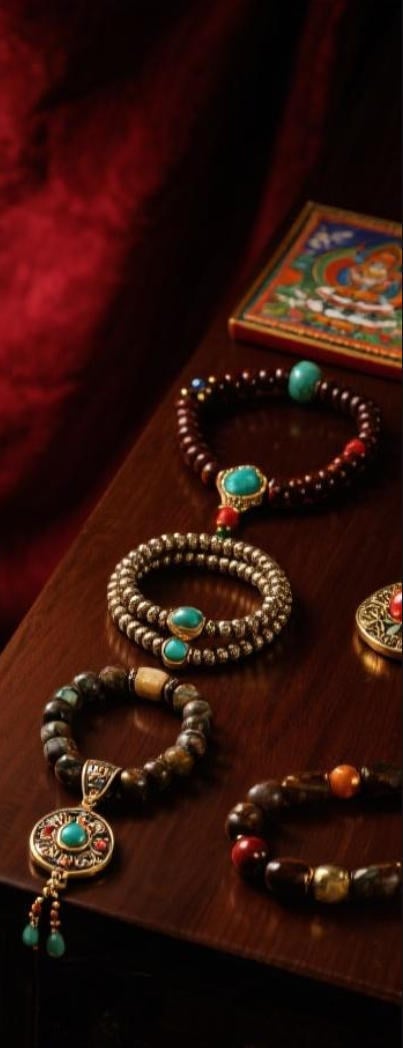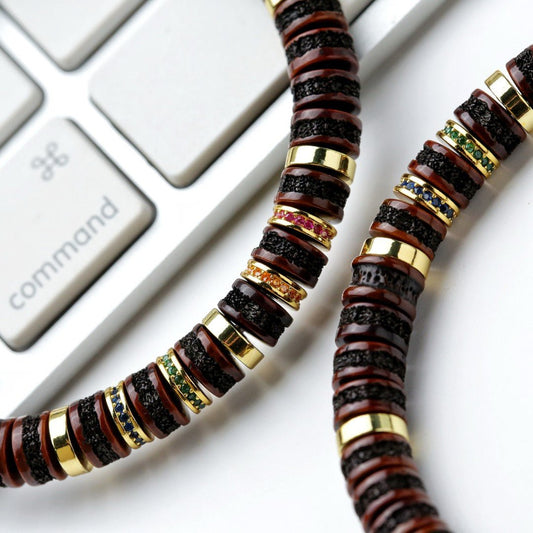
Amid the sophisticated tapestry of Tibetan Buddhism reside two notable emblems: the painted thangka and the sacred bodhi bead. Every one, in its special manner, acts as a gateway for transcendental understanding. The thangka, an elaborate depiction, features deities, cosmic designs, or scriptural scenes, supporting mindfulness exercises.
Conversely, the bodhi bead, often crafted from unique minerals, timber, berries, or bony material, is a tangible reminder of Buddha's transcendence under the bodhi tree. Touching the beads encourages spiritual concentration.
- Together, the thangka and the bodhi bead illustrate the interconnectedness of art and spirituality. They offer a tangible link to the age-old knowledge of Tibetan Buddhism.
Narratives Engraved on Camel Fragments
Spanning bygone centuries, primordial treasures whisper tales pertaining to a world long lost. These are not treasured objects of shadowed empires, but modest camel bones carved with emblems that safeguard the stories of a bygone phase. Every fragment holds the echo in a life lived, a journey undertaken, and a connection to the ancestral wisdom encompassing which embraces us all.
- Such objects
- Fragments
- Are
Interpreting the Visual Narratives of Thangka
Tangkas are radiant paintings on canvas, meticulously crafted by Tibetan artists to depict exalted figures and scenes from Buddhist teachings. Each detail within a thangka is laden with interpretation, forming a complex tapestry of visual narratives that guide the viewer on a spiritual journey. The tones used in thangkas are not merely aesthetic choices but carry fundamental connotations, representing different aspects of the Buddhist beliefs. From the majestic figures to the intricate ornamentation, thangkas offer a outlook into the rich world of Tibetan Buddhism, inviting us to ruminate upon its enlightenment.
- Classic thangka art often depicts key Buddhist figures such as Buddha Shakyamuni, Bodhisattvas like Avalokiteshvara and Manjushri, and enlightened beings from various orders of Tibetan Buddhism.
- Amidst these representations lies a wealth of awareness that can be comprehended by those who engage the symbolic language of thangkas.
Path to the Buddha's Path to Enlightenment: Embodied in Beads and Bone
Upon the winding road to nirvana, the Buddha employed representations imbued with profound significance. These bead and object held within them the substance of his doctrine, expressing glimpses into the fabric of reality. Using their configuration, the Buddha conveyed profound verities that exceed the realm of physical perception.
From his prayer beads, crafted from valuable materials, radiated vibrations that matched with the delicate currents within. The substance of a individual, meticulously transformed into tokens, served as tangible guides of the impermanence inherent to all entities.
Thangkas: Windows into Himalayan Spirituality
Thangkas vivid paintings on cloth serve as potent representations of Himalayan spirituality. These intricate works of art, meticulously created with refined brushstrokes, depict a vast array featuring Buddhist deities, mandalas, and scenes from holy scriptures. Each thangka is a visual guide for meditation and contemplation, offering awareness into the intricate teachings of Buddhism.
- They are often used in ritual ceremonies and
- reflecting states of spiritual enlightenment.
- Thangkas operate as not merely decorative treasures but rather views into the rich and captivating world of Himalayan spiritual traditions.
Bodhi Beads: A Journey Through Mindfulness and Compassion
Each pellet on a bodhi bead mala whispers tales of ancient wisdom, guiding us on a quest through the tranquil waters of mindfulness. As we touch these intricately fashioned beads, our fingers trace the contours of separate one, anchoring our cognition in the present moment. The gentle feel of the beads against our palms serves as a tangible reminder to respire, fostering a sense of equanimity.
- With every bead that passes between our fingers, we foster compassion, extending it first to ourselves and then outward to the world.
- Oriental wisdom teaches us that mindfulness is a ability that requires patience and commitment.
With the aid of the rhythmic repetition of mantra or simply the mindful enumerating of the beads, we emancipate from the relentless chatter of the mind.
The practice of bodhi beads is a subtle invitation to revive our connection with ourselves and the world around us.
Soulful Creation: Camel Bone Bracelets Enhancing Spiritual Progress
Intention is a powerful force in our lives, shaping our experiences and guiding us towards our spiritual goals. When we combine this intention with the sacred energies of crafting a camel bone bracelet, we create a potent synergy that can amplify our spiritual growth.Camel bone carries profound symbolism, representing resilience. Its natural beauty and rustic charm serve as a constant reminder of the inherent power within each of us.By deliberately picking each shard, channel our desires into the bracelet. With every knot or interlock, we insert our hopes, dreams, and aspirations for spiritual evolution. This act of creation becomes a contemplative exercise, aligning us with our inner wisdom and guiding us on a pilgrimage of understanding.- Let the natural hues and textures of the bone guide your vision.
- Sense the spiritual currents channeling within your crafting.
- Bless the bracelet in ceremonies to infuse vitality.
The Fascinating Story of Camel Bone in Buddhism
In the rich tapestry inside Buddhist tradition, artifacts often hold profound symbolic meaning. Amidst these varied objects, camel bone stands out as a noteworthy and fascinating element. Within history, this material has been integrated in the crafting within various Buddhist relics, each imbued with specific connotations.
- Considered as a symbol of resilience and strength due to the camel's ability to thrive in harsh environments, camel bone often embodies spiritual fortitude.
- Besides, the color and texture regarding camel bone are believed at some to hold auspicious connotations, denoting purity and serenity.
Accordingly, camel bone has become a esteemed part of Buddhist custom, serving as a tangible tie to the profound teachings associated with this ancient faith.
Thangka Masterpieces: Narratives in Color
Within the ethereal realm of Tibetan Buddhism, Thangka paintings emerge as sacred portals to enlightenment. These remarkable works, meticulously crafted by skilled artists known as thangkapa, depict a myriad with a spectrum of vibrant deities, celestial beings, and mythical creatures. Each brushstroke infuses profound spiritual significance, narrating ancient tales and philosophical theories.
- Offering a vast anthology of Buddhist iconography, Thangkas serve as both devotional objects and instructional tools. Faithful practitioners gaze upon these paintings during rituals and meditations, seeking to cultivate spiritual wisdom.
- Beautifully adorned with intricate details embellished by diverse vibrant hues, Thangkas are considered windows into the divine. All painting acts as a symbolic representation of the Deity's teachings and the path to liberation.
Through their potent imagery and symbolism, Thangka paintings offer a glimpse into the rich doctrinal traditions of Tibet. They are a testament to the enduring beauty of Tibetan art and its profound ability to stimulate.
Embracing the Duality: Thangkas and the Cycle of Life and Death
Thangkas, lively crafted Tibetan hangings, communicate a serious study of existence’s temporality. Each intricate illustration depicts deities and beings engaged in the progressive venture of life and death, a panorama of birth, growth, impermanence, and reawakening. The artists skillfully weave these concepts within the thangka's universe, highlighting the correlation of all things. Through vivid illustrations, they invite us to meditate on our own being. The cycle circulates, a progression of coming and going, underscoring the preciousness of each moment. By embracing this duality, thangkas teach us to appreciate the beauty in both life's joys and sorrows.Chains of Spirituality: The Significance of Bracelets in Buddhist Practice
In the intricate tapestry of Buddhist practice, seemingly straightforward objects often hold profound meaning. Among these are bracelets, which serve as tangible symbols of devotion and commitment to the journey of Buddha. Worn on the wrist, a bracelet functions as a constant reminder of one's aspirations and intentions. It can stand for the impermanence of life, motivating practitioners to remain balanced in the present moment. Some bracelets may embrace sacred signs, such as mantras or the names of Buddhas, which are viewed to generate positive energy and defense. Others frequently are made from ingredients with spiritual significance, like sandalwood or lotus seeds, boosting the bracelet's energy. Ultimately, the significance of a Buddhist bracelet extends far beyond its physical form. It becomes a powerful tool for reflection, a catalyst to live in harmony with the teachings of Buddha, and a source of one's Thangka unwavering loyalty.